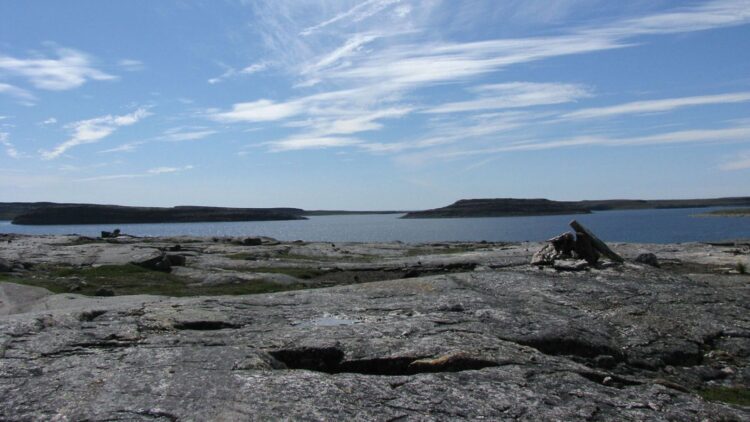There is a lot we do not know about the creation of our planet and what Earth was like in its infancy. As much evidence as there might be underneath our feet, it is buried quite far down and it can be hard to access and even harder to interpret, and so there are many questions that are still unanswered. But sometimes there is a discovery that help us figure out a bit more about the origins of out planet and this time around it happened in the eastern shore of Hudson Bay in northern Quebec. Known as the Nuvvuagittuq greenstone belt this area appears to have some of the oldest surviving pieces of the planet’s crust, possibly more than 4.16 billion years old.
The birth of our planet was anything but peaceful. It was a time of constant meteoric impacts, volcanic fumes and heat beyond our comprehension, but it helped forge many of the landscapes that we see today, including that of the Nuvvuagittuq greenstone belt. This time is known by the scientific community as the Hadean eon and it encompasses the first 600 million years of Earth’s existence, long before continents even began to take shape.
The Nuvvuagittuq greenstone belt find that is exciting the scientific community
While there are many rocks on this Earth, and many old rocks that have been discovered, these are special, as they are slices of magma that once surged up from Earth’s mantle and cooled into solid form, long before being caught up in older oceanic basalt. They have been dated thanks to advances in technology, which have allowed scientists to use the radioactive decay from samarium to neodymium. This is important because for years, geologists have struggled to date such old rocks because they usually rely on zircon crystals, but the rocks in Nuvvuagittuq did not form with enough silicon to create zircons in the first place, stumping them for years.
The new dating method was used in two separate systems, and they both pointed to an age of 4.16 billion years and this agreement is what makes this discovery so unique.
Finding evidence of the early formation of the planet is quite the accomplishment, as the surface has been reshaped again and again by tectonic plate activity, meteor strikes, and erosion, so finding evidence of a past that long gone is almost unprecedented. These rocks could contain information about the conditions of early Earth, and maybe even early signs of life. Some nearby formations show chemical features and structures that resemble the earliest forms of microbial life, and we have only seen a very small sample.
“If these traces are confirmed,” one researcher noted, “we would be looking at a fascinating scenario.” And that is that if these rocks truly preserve evidence from that era they could contain evidence not just this chapter in Earth’s history, but they may also be the first record of how life began.
There are some skeptics that do not believe that the excitement is warranted, after all, geological processes over billions of years can easily mess with the original “clock” of a rock sample. An event like a tectonic shift can alter a crystal and skew the readings of its age, but the fact that this latest research used two independent dating techniques and focused on well-preserved magma intrusions has persuaded even some of the skeptics.
This discovery could be useful even outside of planet Earth, as it could also help scientists discover conditions on early Mars or the icy moons of Jupiter when we manage to get there. It can maybe prove that life does not need billions of years to get started, and the right conditions will hep precipitate it no matter what.

